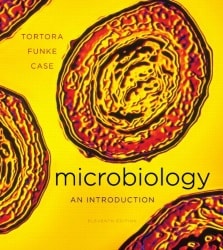Amensalism
One of the partners is inhibited, while the other is not affected in any significant way.
Commensalism
One of the organisms benefits, and the other is unaffected.
Mutualism
Benefits both organisms.
Predation
Between two organisms of unlike species in which one of them acts as predator that captures and feeds on the other organism that serves as the prey
Parasitism
One organism gains and tho other is harmed.
Normal Microbiota
Permanently colonize the host
Transient Microbiota
Colonize the host for days weeks or months
How do Normal Microbiota protect?
Competetive Exclusion
Compete for nutrients
Alter conditions such as pH, available oxygen
Produce harmful substances
What is Competetive Exclusion?
Covers binding sites so pathogens can't bind
Probiotics
Addition of microbes to the diet in order to provide health benefits beyond basic nutritional value
Benefits of Probiotics?
Restore friendly bacteria in digestive tract
Aid in digestion and absorption of nutrients
Promote proper elimination of waste
Prebiotics
Selectively stimulate bacteria of color and improve health of host
Infection
Colonization of the body by pathogens
Disease
Impairment of normal state of an organizm or any of it's components that hinders the performance of vital functions
Infectious Disease
Disease that is caused by microorganisms
Non communicable disease
Not transmitted from one host to another
Communicable disease
Spread from one host to another
Contagious disease
Easily spread from one host to another
Symptom
Change in body function that is felt as a result of disease
sign
change in body that can be measured or observed as a result of disease
syndrome
A specific group of signs and symptoms that accompany a disease
Acute infections
short duration
may develop long lasting immunity
result in productive infections
disease symptoms result from tissue damage and infection of new cells
Persistent infections
viruses continually present in host
Persistent infections caused by?
Integration of viral genome into host genome
decrease of antigenicity of virus
mutation to less virulent and slower reproducing form
three categories of persistent infections
latent
chronic
slow
Latent infections
infection is followed by a symptomless period.
During latency what happens?
Virus stops reproducing and remains dormant for some time, Symptoms antivirus -antibodies, and viruses are not detectable.
Reactivation of a latent virus
Infectious particles are again detected
symptoms may be different than originally
Chronic Infections
Infectious virus can be detected at all times
i.e. Hepatitis
During a chronic infection is the disease always present?
No. may be absent or present or may develop late
i.e. Hepatitis
Slow Infections
Infectious agent gradually increases in amount over a long period of time
During a slow infection are symptoms always apparent?
no, during the increase they may not be apparent
i.e. retrovirus or prions
Classifications of Disease
(5)
Sporadic
Outbreak
Endemic
Epidemic
Pandemic
Sporadic
Occurs occasionally in a population (irregular)
Outbreak
Sudden and unexpected occurrence of disease usually focal or in a limited segment of the population.
Endemic disease
Constantly present in a population
Epidemic disease
Acquired by many hosts in a given area in a short time
Pandemic Disease
Increase in disease occurrence within large population over wide region
Disease Incidence
Fraction of a population that contracts a disease during a specific time.
Disease Prevalence
Fraction of a population having a specific disease at any given time.
Koch's Postulates :
Same pathogen must be present in every case of the disease
Pathogen must be isolated from the diseased host and grown in pure culture
pathogen from the pure culture must cause the disease when it is inoculated into a healthy susceptible laboratory animal
pathogen must be isolated from the inoculated animal and must be shown to be the original organism
What disease did Koch search the link between organism and disease?
Anthrax and Bacillus anthracis
What is unculturable taxa
organism cannot survive outside the host
True or false - Pathogens can cause only one type of disease
False. some pathogens can cause several disease conditions
True or False - Some pathogens cause disease only in humans
True. HIV
Source of pathogen
Location from which pathogen is transmitted to host
Reservoir of pathogen
Site or natural environmental location in which pathogen is normally found - can also be the source
Carrier
infected host
Casual carrier
harbors pathogen for a short time
Chronic carrier
Harbors pathogen for long periods of time (months, years, life)
Incubatory carrier
harbors pathogen, but is not yet ill
Active carrier
Has overt clinical case of disease
Convalescent carrier
has recovered from disease, but continues to harbor large numbers of the pathogen
Healthy carrier
harbors pathogen, but is not ill
Animal reservoir
transmission from animal to human, can be direct or indirect
Vectors
Organisms that spread disease from one host to another
Water
Air
Soil
Food
What are the four main routes of pathogen transmission?
Contact
Airborne
Vehicle
Vector-borne
Direct contact transmission
person to person or person to source or reservoir
Indirect contact
Involves an intermediate such as tissues, bedding, utensils, ,etc. (fomite)
Droplet spread
large particles that travel (>5 Micro meter travel < 1 meter)
Airborne transmission
droplet is suspended in air and travels > 1 meter
Can remain airborne for hours or days and travel long distances,
Vehicle transmission
Vehicles are inanimate materials or objects involved in pathogen transmission, (water, food)
Vector Borne Transmission
External (mechanical) transmission
Passive carriage of pathogen on body of vector
No growth of pathogen during transmission
Vector Borne Transmission
Internal Transmission
Carried within Vector
Horborage transmission
Pathogen does not undergo changes within vector
Biologic transmission
pathogen undergoes changes within vector
Active escape
movement of pathogen to exit
Passive escape
Excretion in feces, urine, droplets, saliva or desquamated cells
How to control epidemics?
(3 part answer)
Reduce or eliminate source or reservoir of infection
Break connection between source and susceptible individual
Reduce number of susceptible individuals
Nosocomal Infection
Acquired as a result of a hospital stay
What % of hospital patients are affected by nosocomial infections??
5-15%
What bacteria usually cause nosocomial infections?
Normal microbiota
